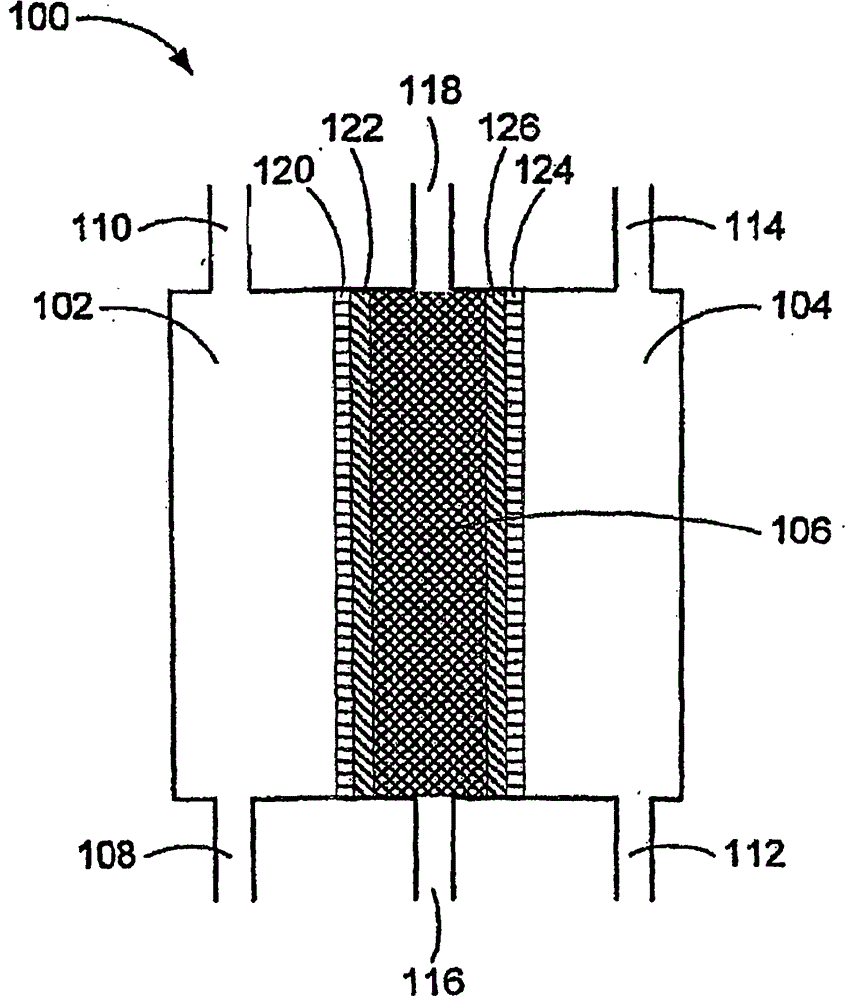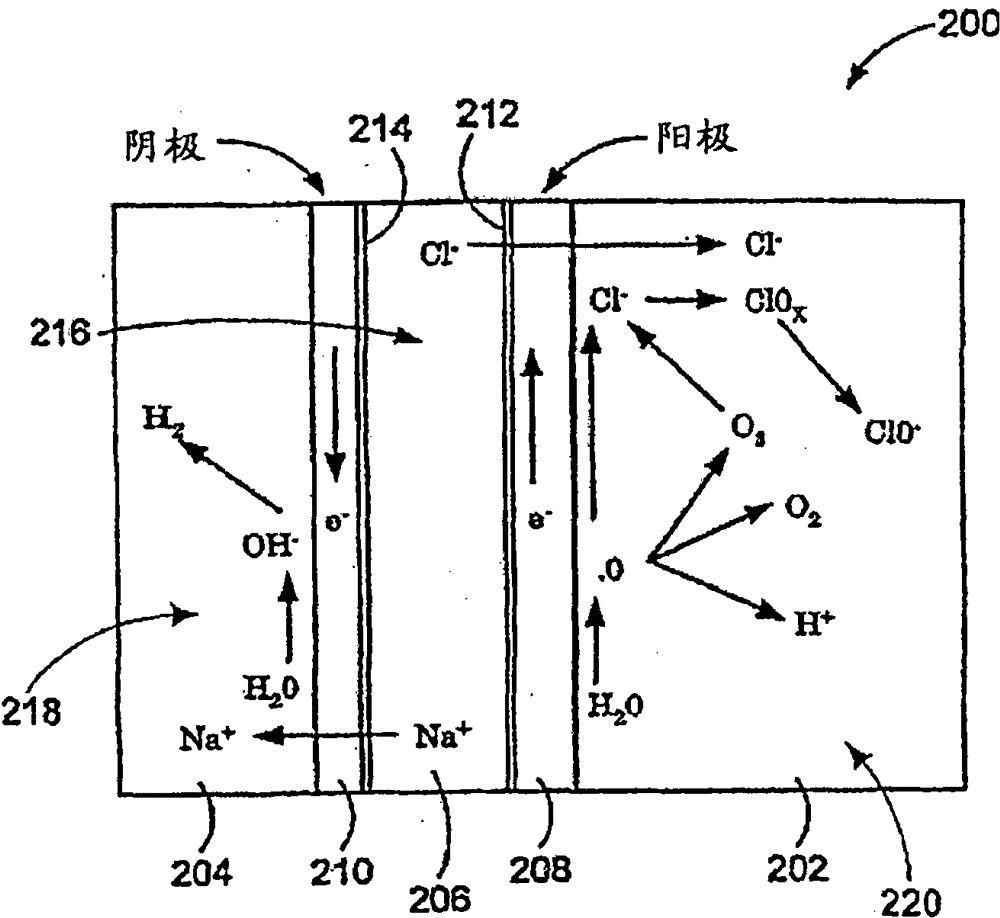Methods of treating or preventing inflammation and hypersensitivity reactions using redox potential aqueous solutions
An aqueous solution, potential technology, applied in the direction of peroxide active ingredients, anti-inflammatory agents, resistance to vector-borne diseases, etc., can solve problems such as toxicity and allergic reactions
- Summary
- Abstract
- Description
- Claims
- Application Information
AI Technical Summary
Problems solved by technology
Method used
Image
Examples
Embodiment 1-3
[0165] These examples demonstrate the unique characteristics of the ORP water solution used in the present invention. Samples of the ORP water solutions in Examples 1-3 were analyzed according to the methods described herein to determine the physical characteristics and levels of ions and other chemical species present in each sample. The results obtained for chlorine dioxide, ozone and hydrogen peroxide are based on standard tests used to determine these species, but different species can be represented and positive test results can also be produced. Furthermore, it has been reported that chlorine dioxide, ozone and hydrogen peroxide react with hypochlorite, leading to its consumption and other compounds such as HCl and O 2 )produce. The pH, oxidation-reduction potential (ORP) and ion species present for each sample of the ORP water solution are listed in Table 1.
[0166] Table 1. Physical properties and ionic species present in ORP water solution samples
[0167] ...
Embodiment 4-10
[0170] These examples demonstrate the addition of varying amounts of bleach to the ORP water solution of the present invention. In particular, these examples demonstrate the antimicrobial activity and fabric bleaching capabilities of the compositions.
[0171] Prepare 10% using distilled water bleach solution. The following solutions were then prepared using the 10% bleach solution: 80% ORP water solution / 20% bleach (Example 4); 60% ORP water solution / 40% bleach (Example 5); 40% ORP water solution / 60% bleach ( Example 6); 20% ORP water solution / 80% bleach (Example 7); and 0% ORP water solution / 100% bleach (Example 8). Two control solutions were also used for comparison, including 100% ORP water solution / 0% bleach (Example 9) and ORP water solution with 0.01% Tween 20 disinfectant (Example 10). The physical properties of these samples, especially pH, oxidation-reduction potential (ORP), total chlorine (Cl-) content and hypochlorous acid (HClO-) content were determined and c...
Embodiment 11
[0184] The purpose of this study was to evaluate the safety of Microcyn, a typical ORP water solution, when administered as drops into the nasal cavity of rabbits. The 33 rabbits were randomly divided into two groups, Group I and Group II. Group I (18 animals) was used as a control group and Group II (15 animals) was given the test article. On day -1 or day 0, body weights were recorded and blood samples were collected for analysis of selected parameters. On day 0, animals in group I were given 500 μL of sterile saline and animals in group n (annuals) were given 500 μL of test article (at 50% concentration). The control and test articles were administered as drops into the right nostril twice daily. Animals were dosed in the same manner on days 1-6. Animals were observed daily for pharmacological and / or toxicological effects with dedicated nasal attention. Body weights were recorded weekly until study termination. On day 7, one-third of the animals in each group were sele...
PUM
 Login to View More
Login to View More Abstract
Description
Claims
Application Information
 Login to View More
Login to View More - R&D
- Intellectual Property
- Life Sciences
- Materials
- Tech Scout
- Unparalleled Data Quality
- Higher Quality Content
- 60% Fewer Hallucinations
Browse by: Latest US Patents, China's latest patents, Technical Efficacy Thesaurus, Application Domain, Technology Topic, Popular Technical Reports.
© 2025 PatSnap. All rights reserved.Legal|Privacy policy|Modern Slavery Act Transparency Statement|Sitemap|About US| Contact US: help@patsnap.com



